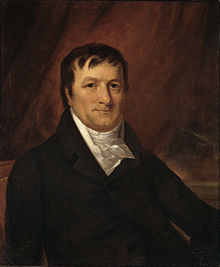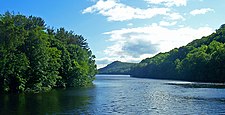
Cold Spring is a village in the town of Philipstown in Putnam County, New York, United States. The population was 1,986 at the 2020 census. It borders the smaller village of Nelsonville and the hamlets of Garrison and North Highlands. The central area of the village is on the National Register of Historic Places as the Cold Spring Historic District due to its many well-preserved 19th-century buildings, constructed to accommodate workers at the nearby West Point Foundry. The town is the birthplace of General Gouverneur K. Warren, who was an important figure in the Union Army during the Civil War. The village, located in the Hudson Highlands, sits at the deepest point of the Hudson River, directly across from West Point. Cold Spring serves as a weekend getaway for many residents of New York City.
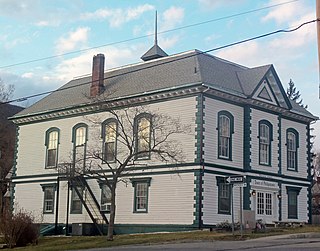
Philipstown is a town located in the western part of Putnam County, New York, United States. The population was 9,831 at the 2020 census.
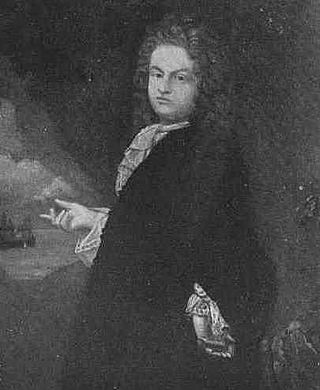
Frederick Philipse, first Lord of the Manor of Philipseborough (Philipsburg) and patriarch of the Philipse family, was a Dutch immigrant to North America of Bohemian heritage. A merchant, he arrived in America as early as 1653. In 1662, he married Margaret Hardenbrook de Vries, a wealthy and driven widow. Together, and variously in league with slavers, pirates, and other undesirables, the couple amassed a fortune.
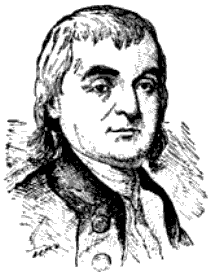
Beverley Robinson, was a Virginia-born soldier who became a wealthy colonist of the Province of New York and is best known as a Loyalist during the American Revolutionary War. Robinson married Susanna Philipse, heiress to a significant share of the roughly 250 square miles (650 km2) Highland Patent on the lower Hudson River in the Province of New York.
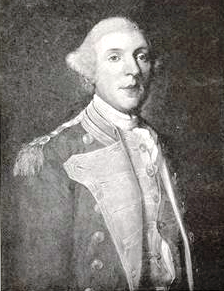
Roger Morris was a colonel in the British Army who fought in the French and Indian War. He was married to Mary Philipse, middle daughter of Frederick Philipse, second Lord of the Philipsburg Manor, and a possible love interest of George Washington. She owned a one-third share of the Philipse Patent, a vast landed estate on the Hudson River which later became Putnam County, New York.

Philipsburg Manor was a manor located north of New York City in Westchester County in the Province of New York. Netherlands-born Frederick Philipse I and two partners made the initial purchase of land that had been part of a Dutch patroonship owned by Adriaen van der Donck. Philipse subsequently bought his partners out and added more land before being granted a royal charter in 1693 for the 52,000 acres (21,000 ha) estate, becoming its first lord.

Philipse Manor Hall State Historic Site is a historic house museum located in the Getty Square neighborhood of Yonkers, New York. Originally the family seat of Philipse Manor, it is Westchester County's second oldest standing building after the Timothy Knapp House. Located near the Hudson River at Warburton Avenue and Dock Street, it is owned and operated by the New York State Office of Parks, Recreation and Historic Preservation.
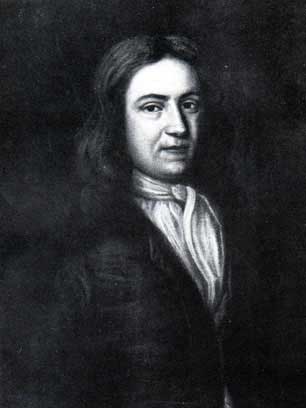
Adolphus Philipse (1665–1750) was a wealthy landowner of Dutch descent in the Province of New York. In 1697 he purchased a large tract of land along the east bank of the Hudson River stretching all the way to the east to the Connecticut border. Then known as the "Highland Patent" it became in time referred to as the Philipse Patent. After his death the Patent was inherited by his nephew, Frederick Philipse II, his only heir-at-law, who became the second Lord of the Manor of Philipsborough in Westchester County.

Frederick Philipse II, was a colonial American merchant, landowner, and politician. Philipse was the only son of Maria Sparkes, daughter of the Governor of Barbados, and Philip Philipse, eldest son of Frederick Philipse I, 1st Lord of the Philipsburg Manor. Philip predeceased his father, and family lands passed on to younger son Adolphus Philipse. Upon his uncle's death Frederick II inherited his share of Philipse lands and commercial interests, thereafter becoming the elder Philipse male and 2nd Lord of Philipsburg Manor.

Frederick Philipse III was the third and last Lord of Philipsburg Manor, a 52,000 acres (21,000 ha) hereditary estate in lower Westchester County, New York, and a Loyalist during the Revolutionary War.

Philip Philipse (1663–1699) was the eldest son and heir of Frederick Philipse, a Dutch-born merchant trader, slaver, land baron, and 1st Lord of Philipsburg Manor. However, he died before his father, and by Frederick's will Philip's legacy was split between his bachelor brother Adolphus Philipse and his son Frederick Philipse II, who became the 2nd Lord of Philipse Manor.

The Rombout Patent was a Colonial era land patent issued by King James II of England in 1685 sanctioning the right of Francis Rombouts and his partners Stephanus Van Cortlandt and Jacobus Kip to own some 85,000 acres (34,000 ha) of land they had purchased from Native Americans. The Patent included most of what is today's southern Dutchess County, New York.

The Philipse family was a prominent Dutch family in New Netherlands and the British Province of New York. It owned both the vast 81 sq mi (210 km2) hereditary estate in lower Westchester County, New York, Philipsburg Manor, the family seat, and the roughly 250 sq mi (650 km2) Highland Patent, later known as the "Philipse Patent", in time today's Putnam County, New York.

Mary "Polly" Philipse (1730–1825) was the middle daughter of Frederick Philipse II, 2nd Lord of Philipsburg Manor of Westchester County, New York. Of Anglo-Dutch extraction, she was a wealthy heiress, possible early love interest of George Washington, and New York City socialite. Married to an ex-British army colonel, her Loyalist sympathies in the American Revolution reshaped her life.

Susanna Philipse was the eldest surviving daughter of Frederick Philipse II, 2nd Lord of Philipsburg Manor of Westchester County, New York.

Margaret Philipse was the daughter of Frederick Philipse II, 2nd Lord of Philipsburg Manor of Westchester County, New York.

Philip Philipse (1724–1768) was the second son of Frederick Philipse II, 2nd Lord of Philipsburg Manor of Westchester County, New York. He was, along with his sisters Susanna (1727–1822), Mary (1730–1825), and Margaret (1733-1752), a one-quarter heir to the roughly 250 sq mi (650 km2) "Highland Patent" of his father.

The Fauconnier Patent was a royal land patent granted in 1705 in Dutchess County, Province of New York. It was the twelfth of fourteen granted between 1685 and 1706 that came to comprise the entirety of the historic county footprint.

North Highlands is a hamlet in Putnam County, New York which consists of the northernmost portions of Philipstown in the Hudson Highlands. Like the adjacent village of Nelsonville, it shares a ZIP Code and school district with nearby Cold Spring.



